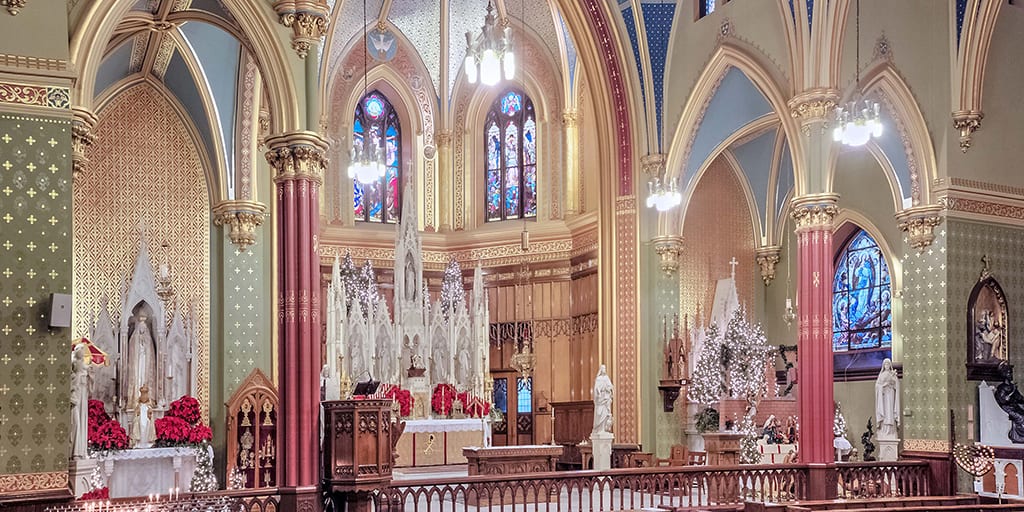Hierarchy of Decoration
How temporary decoration relates to permanent decoration and architecture.


If you have followed the writings and methods of John Canning Co. and Canning Liturgical Arts for even a small time, you are likely familiar with the company’s strict adherence to Owen Jones’s Propositions in the Grammar of Ornament. The first proposition is among the core principles on which we are founded, “The Decorative Arts arise from, and should properly be attendant upon, Architecture.” As designers in the ecclesiastical arts, architecture and design serve a sacred purpose. By way of the shapes created in the architecture, symbolism and design follow illustrating the history and mystery of faith. When proportional and fitting architecture is subsequently decorated properly, the interior then functions in a state of repose possessing a natural beauty that is neither lacking nor overwhelming, one that is whole, proportional, permanent and beautiful.
The decorative arts is our trade: ornamental plaster, decorative painting, gilding, the conservation of murals as well as the design and execution of new murals. However, in this write-up, we will step beyond the perimeter of the permanent, architecture and the ornament fixed to it, in order to explore the sphere of temporary decoration.
In the last few weeks across the world, Christmas lights and décor have appeared lining city streets, storefronts and homes. The season of Advent bids Christians to prepare for Christmas. In this time of preparation, churches also ready for the sacred feast honoring the Birth of Christ. Carols and hymns are rehearsed, services run through, altar boys coordinated, and flowers and evergreens added to grace the church in festive decoration. What a blessing that a significant length of time is allocated to preparing for this great feast so that at midnight, on Christmas Eve, when the celebration begins not only will everything be beautiful and organized but also through spiritual and physical preparation, one might truly understand and appreciate the joy of Christmas.
As creators, we often look to nature for inspiration in order to abstract the earth’s vegetation, symmetry and beauty into a decorative scheme. Seasonal decoration, especially when concerning floral and evergreen décor, is the natural beauty of God’s creation brought indoors to elevate and further emphasize the importance of a particular feast. Thus literally drawing from the best of nature to honor the Creator. The progression is so natural and so brilliant. The church is first designed, built and decorated from and inspired by the best of Creation and then further embellished with the fleeting gems of the earth, all for the honor and glory of God.
Church hierarchy does not provide any official guidelines for seasonal decoration other than general appropriateness. However, where there is truth and beauty there is also order and where there is order there must be rules. We put together a list of 10 guidelines based on the relationship between architecture and permanent decoration (decorative painting, ornamental plaster, artwork, statues, etc.). We took that idea a step further to determine how temporary decoration relates to architecture and decoration.
Abstracting Owen Jones's first principle mentioned in the first paragraph, the natural hierarchy of decoration in a church, or any building for that matter, would begin with the architecture, to which the decorative painting and plaster are subservient and serve to support, followed lastly by temporary decoration which should carefully compliment the decorated architecture. Our advice is as follows:
- Decoration should not be obnoxious.
- Decoration should not hinder or harm.
- Decoration should acknowledge the existing architecture and design.
- Decoration should refrain from inventing new architecture.
- Decoration should avoid repetition.
- Decoration should avoid extravagance.
- Decoration should be proportional to the decorated.
- Decoration must be in repose with the decorated.
- Decoration should have hierarchy.
- Be organized and do not design by committee.
